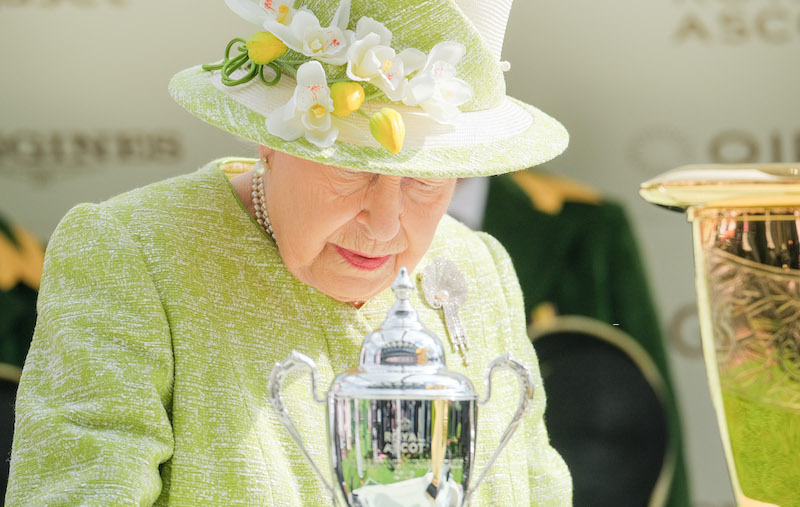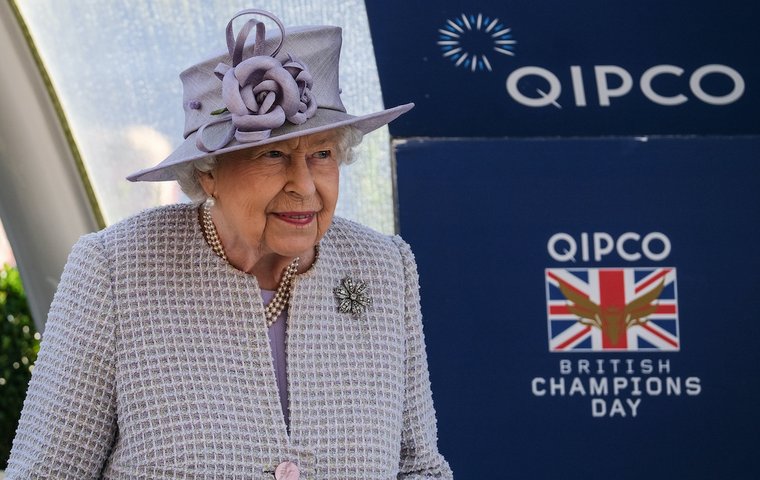
Britain is in mourning following the death of Queen Elizabeth II at the age of 96 – here is Julian Muscat’s appreciation of Her Majesty’s lifelong involvement in horse racing
There was never much doubt the Royal Studs were in good hands when Princess Elizabeth succeeded her father, George VI, to the British throne in 1952.
The princess was five when she was given her first pony, Peggy, and quickly became an accomplished rider. Yet long before she reached her teens Elizabeth became a frequent visitor to the stud at Hampton Court, just south of London, where the young stock were raised. Thoroughbred racehorses were her calling.
It has been that way ever since. So much so that the Platinum Jubilee celebrations on June 3-6 this year were centred around Derby day.
In her 70 years on the throne she barely missed a Derby; the pity was that Her Majesty was unable to attend this year's renewal, while her homebred colt, Reach For The Moon, could not contest the Epsom Classic after he suffered a setback.
The Queen would have known that Reach For The Moon had the right bloodlines for Epsom. As a child she could recite the royal broodmares’ pedigrees in the same way a young Einstein would reel off multiplication tables.
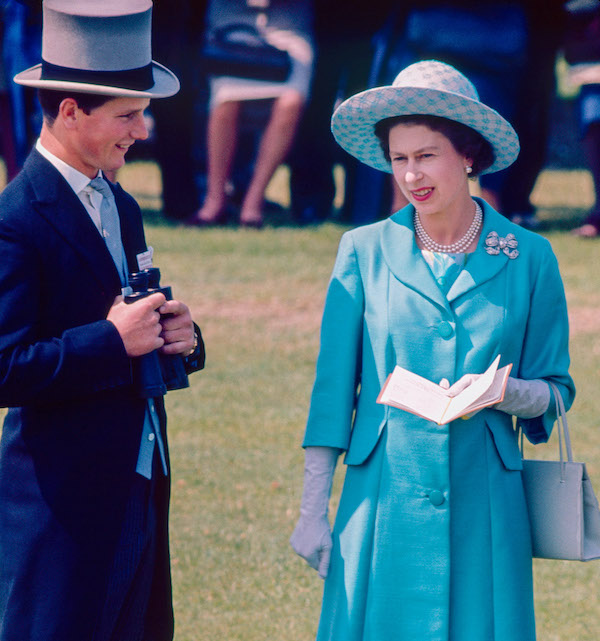 She did just that, aged 12, when the memory of her father’s racing manager, Sir Charles Moore, failed him as he showed the King one of his mares. “She is by the Derby winner, Manna, out of Book Debt, by Buchan,” the princess stated matter-of-factly.
She did just that, aged 12, when the memory of her father’s racing manager, Sir Charles Moore, failed him as he showed the King one of his mares. “She is by the Derby winner, Manna, out of Book Debt, by Buchan,” the princess stated matter-of-factly.
The Queen always immersed herself in the history of the Royal Studs, which had seen the nursery breed 1896 Derby winner Persimmon and his full-brother, the 1900 Triple Crown winner Diamond Jubilee, out of the mare Perdita.
Another royal mare, this time King George VI’s 1,000 Guineas runner-up Feola, almost gave the Queen an unforgettable baptism as an owner. Feola was dam of Aureole, who carried the royal silks in the 1953 Derby just four days after the Queen’s Coronation at Westminster Abbey.
In the event, Aureole beat all bar Pinza to finish second. The Queen could never have known it, such was the Royal Studs’ strength at the time, but she would never again come as close to winning the blue riband in seven decades of trying.
Aureole atoned handsomely for his Derby defeat. The following season he won the Coronation Cup, Hardwicke Stakes and King George VI and Queen Elizabeth Stakes to propel the Queen to the top of the owners’ lists in her second full season as an owner. In that respect Aureole was abetted by Choir Boy and Landau, who posted a royal double at Royal Ascot.
In these early years it was noticeable how much the Queen enjoyed her visits to the races. She was invariably smiling as she interacted with jockeys and trainers, while any royal winner was cheered home with the zest of a passionate fan. Here was an opportunity for Her Majesty to shed the cloak of formality redolent of state occasions.
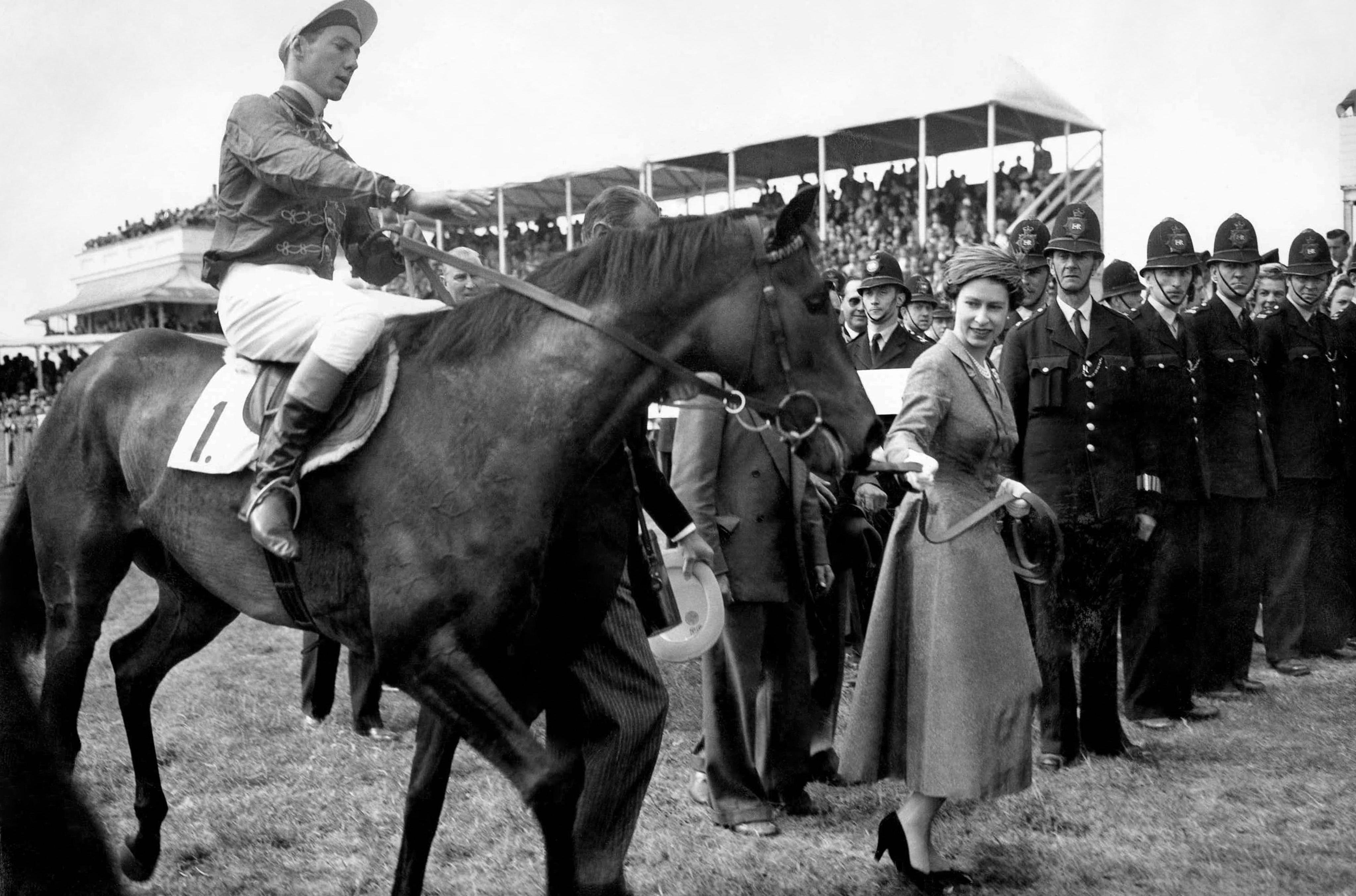 Success continued unabated throughout the 1950s. In 1957 Her Majesty owned the three best three-year-old fillies in Almeria (Ribblesdale Stakes, Yorkshire Oaks, Park Hill Stakes) Carrozza (Oaks) and Mulberry Harbour (Cheshire Oaks). The homebred Pall Mall won the 2,000 Guineas the following year, while another Royal Ascot double in 1959 saw the Queen close the decade with 11 winners at the hallowed venue in eight years. Then the well ran dry.
Success continued unabated throughout the 1950s. In 1957 Her Majesty owned the three best three-year-old fillies in Almeria (Ribblesdale Stakes, Yorkshire Oaks, Park Hill Stakes) Carrozza (Oaks) and Mulberry Harbour (Cheshire Oaks). The homebred Pall Mall won the 2,000 Guineas the following year, while another Royal Ascot double in 1959 saw the Queen close the decade with 11 winners at the hallowed venue in eight years. Then the well ran dry.
1960 was an annus horribilis that yielded just two nondescript winners, while Aiming High’s Coronation Stakes triumph in 1961 was one of only two royal winners at the royal meeting during that decade.
Gaulois’s 1966 Goodwood Cup triumph was trainer Capt Cecil Boyd-Rochfort’s last royal big-race winner before he retired in 1968, to be replaced by Dick Hern. The benefits of Hern’s recruitment were soon apparent: in 1974 he saddled Highclere to win both the 1,000 Guineas and Prix de Diane (French Oaks), the latter triumph triggering delirious scenes at Chantilly as turfistes jostled around the winner’s enclosure. Local gendarmes were overwhelmed by an extraordinary outpouring of joy for the Queen’s homebred filly.
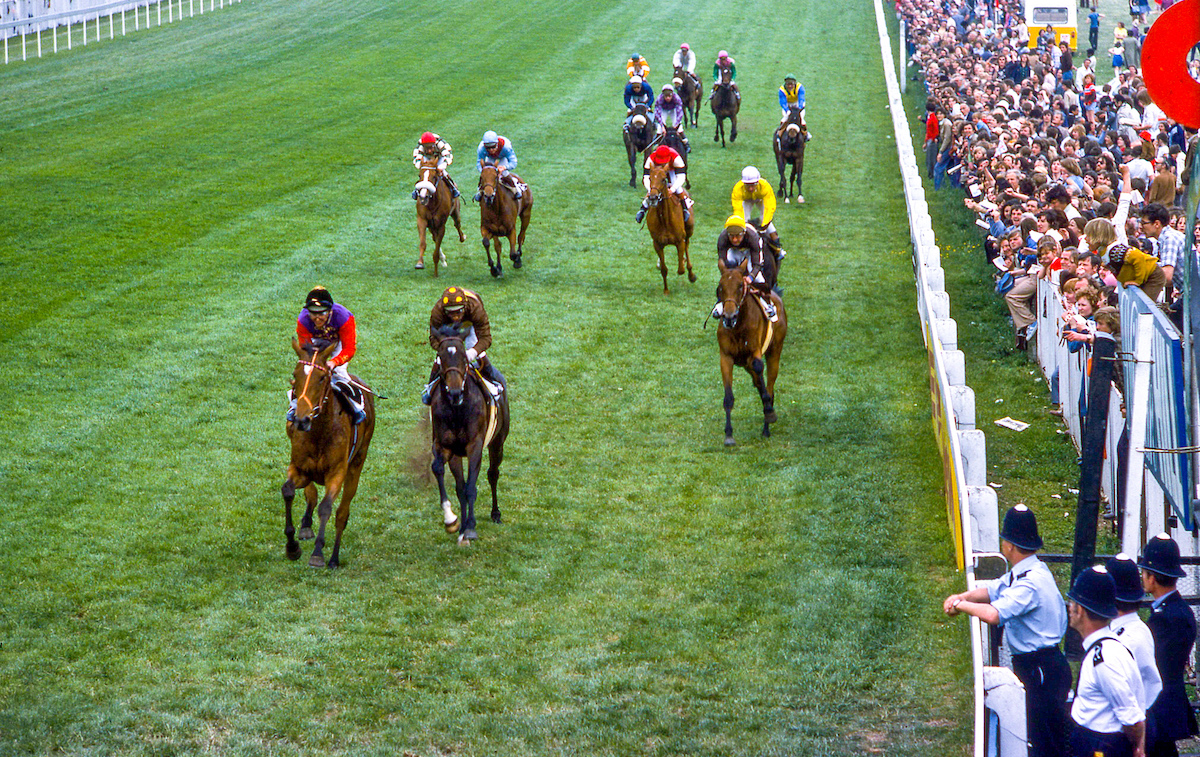 Three years later Hern again came up trumps when he saddled Dunfermline to win the Oaks and St Leger in the Silver Jubilee year of 1977. The great pity was that Her Majesty was unable to be present for either race; her diary was saturated with official engagements. In winning the St Leger, Dunfermline became the only horse to beat Alleged, a colt who went on to win back-to-back runnings of the Prix de l’Arc de Triomphe.
Three years later Hern again came up trumps when he saddled Dunfermline to win the Oaks and St Leger in the Silver Jubilee year of 1977. The great pity was that Her Majesty was unable to be present for either race; her diary was saturated with official engagements. In winning the St Leger, Dunfermline became the only horse to beat Alleged, a colt who went on to win back-to-back runnings of the Prix de l’Arc de Triomphe.
That red-letter day would be the last savoured by Her Majesty for some time. It would be another 36 years before the royal silks captured another G1 race in Britain, courtesy of Estimate’s hugely popular success in the 2013 Gold Cup at Ascot. So while the 1970s closed with a flourish when Expansive (Ribblesdale Stakes) and Buttress (Queen’s Vase) landed a Royal Ascot double, thunder clouds were on the horizon.
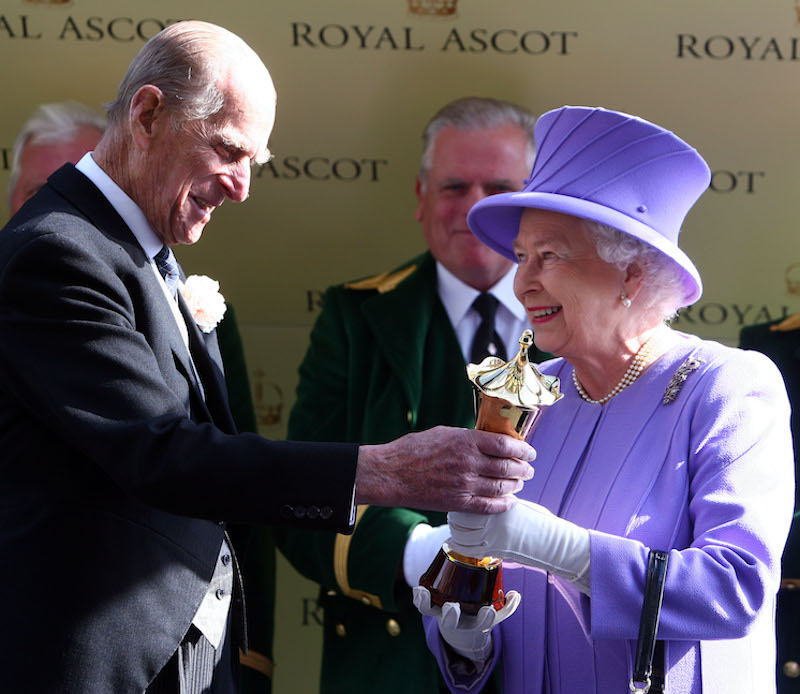 The early 1980s saw the influx into Britain of numerous Middle Eastern potentates with inestimable wealth, headed by the ruling Maktoum family of Dubai. Traditional owner-breeders wilted under the onslaught, and the Queen was not immune. Her horses were competing against a slew of regally-bred animals that had been bought en masse as yearlings, while on the breeding side, many established broodmares and promising filles on the track were bought to join the Arabs’ burgeoning studs.
The early 1980s saw the influx into Britain of numerous Middle Eastern potentates with inestimable wealth, headed by the ruling Maktoum family of Dubai. Traditional owner-breeders wilted under the onslaught, and the Queen was not immune. Her horses were competing against a slew of regally-bred animals that had been bought en masse as yearlings, while on the breeding side, many established broodmares and promising filles on the track were bought to join the Arabs’ burgeoning studs.
Among them was Her Majesty’s Height Of Fashion, the joint top-rated two-year-old filly of 1981 after her victories in the May Hill Stakes and Fillies’ Mile. After winning the Princess Of Wales’s Stakes at three, Height Of Fashion was sold to Sheikh Hamdan Al Maktoum for a seven-figure sum, a deal which looked well timed after the filly ran poorly in two subsequent starts. It also allowed the Queen to buy West Ilsley stables, where Hern trained, with the proceeds.
However, Height Of Fashion made an immediate impact as a broodmare. Having thrown two Group winners from her first two foals she bequeathed Nashwan as her third. But that was only part of a sorry story that would see Hern, then confined to a wheelchair after an earlier hunting accident, dismissed from West Ilsley on health grounds towards the end of 1988.
Hern quickly rebutted that suggestion when he saddled Nashwan to land the 2,000 Guineas in 1989. The rousing reception he received from racegoers at Newmarket told its own story: the public had taken Hern’s side over the Queen’s in an episode that was debated in the highest echelons of the royal household. It was the biggest controversy to confront Her Majesty in her long association with the Turf.
And all the while, the Royal Studs were in the doldrums. The Queen’s inability to compete with petrodollars – all her spend on thoroughbreds comes out of her own private purse – was exacerbated by her inability on security grounds to send her mares to be bred to stallions in Ireland, where the best of them stood.
For all that, Her Majesty’s enthusiasm remained undimmed. While she was enamoured by big-race success, she took greater pleasure in the belief that each foal born to the Royal Studs was given every opportunity to achieve its full potential – even when that potential was below the requisite level to compete in the best races.
When the Troubles in Ireland subsided, however, the Queen, by now into her eighth decade, embarked on a comprehensive overhaul of the broodmare band early in the new millennium. She continued to invest significantly in new bloodlines, emboldened by the knowledge she could mate them to worthy stallions.
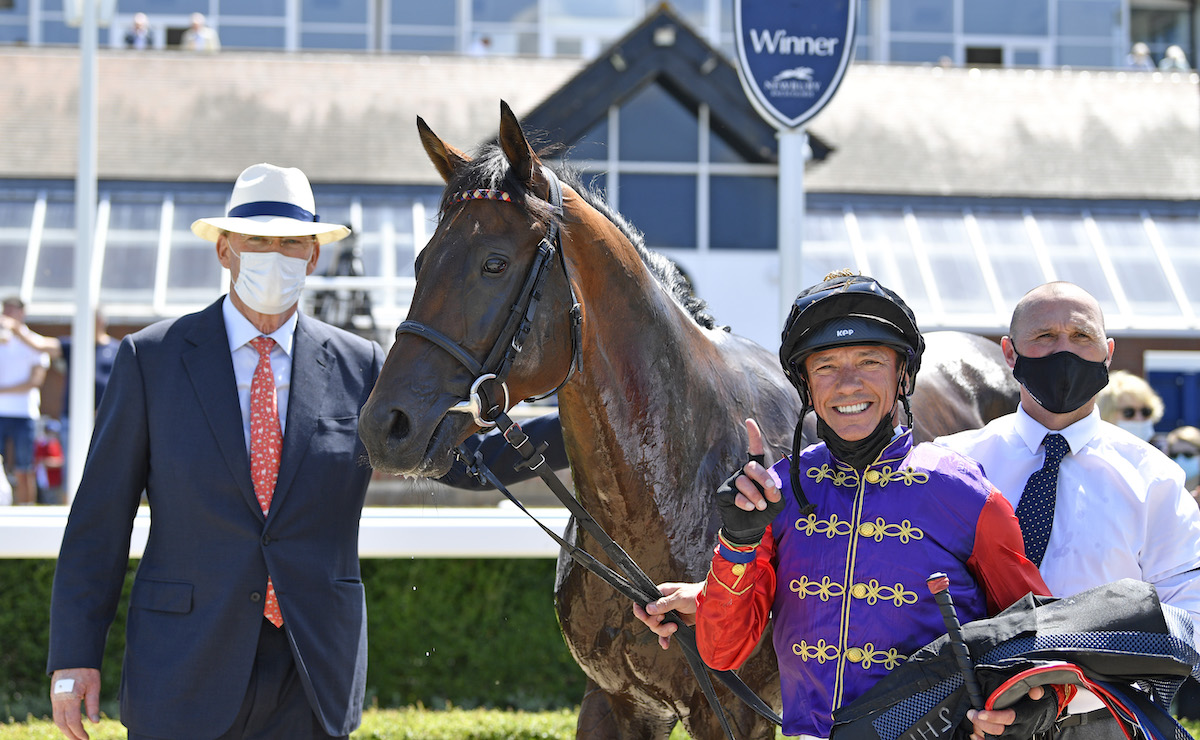 The Royal Studs are thus in the ascendent once more. They are increasingly productive with each passing year, and the quality of blood Her Majesty has now sown into her broodmare band suggests the best is yet to come.
The Royal Studs are thus in the ascendent once more. They are increasingly productive with each passing year, and the quality of blood Her Majesty has now sown into her broodmare band suggests the best is yet to come.
Despite her successes down the decades, the Queen was seen within the horse racing community as an owner rarely afforded Lady Luck’s embrace. The latest instance was the untimely injury to Reach For The Moon which ruled this immensely promising colt out of Derby calculations in this of all years.
Rain or shine, however, fair wind or foul, the Queen remained in thrall to the sport of horse racing. She waAn overview of Queen Elizabeth II’s lifelong involvement in horse racing following news of Her Majesty’s death aged 96s the embodiment of Rudyard Kipling’s fabled poem about treating triumph and disaster just the same.
Fit for a queen: five of the best to carry Her Majesty’s colours
Aureole Her Majesty’s only winner of the race named after her parents: the King George VI and Queen Elizabeth Stakes. She has also had four runners-up.
Doutelle Among Doutelle’s sterling achievements was his victory in the 1958 Ormonde Stakes, in which he beat Ballymoss, subsequently winner of the Eclipse, King George and Arc.
Dunfermline Victories in the Oaks and St Leger made the perfect accompaniment to national celebrations in the Silver Jubilee year of 1977.
Height Of Fashion Following her sale to Sheikh Hamdan, Height Of Fashion became a broodmare in a million. In addition to her celebrated son Nashwan, she is ancestress of Japanese sire sensation Deep Impact and champion miler Baaeed.
Highclere Another dual Classic winner for the Queen, Highclere was a great granddaughter of Feola, who was the Royal Studs’ most prolific broodmare in the 20th Century.
• Visit the Cazoo Derby page at the Epsom website
‘The myths and the legend will last forever’ – farewell to Lester Piggott
All the Queen’s horses: Her Majesty’s former racecourse stars set to parade in Derby Day tribute
Living the dream with Oaks favourite Emily Upjohn – with a little help from Sir Henry Cecil
Munnings in Newmarket: masterly body of work captures nuance and vigour in equine form
Analysis: Baaeed looks brilliant – but is he the new Frankel?
View the latest TRC Global Rankings for horses / jockeys / trainers / sires



